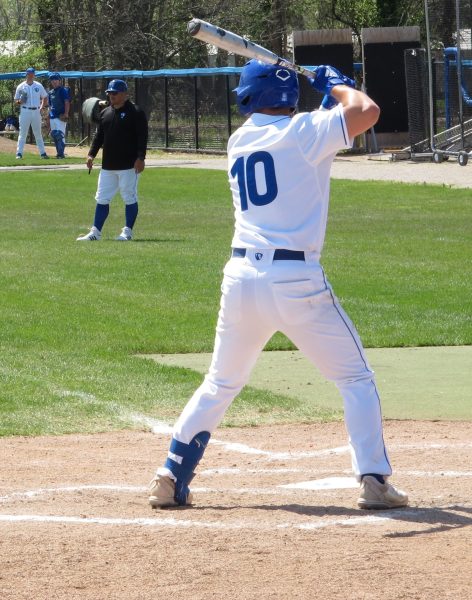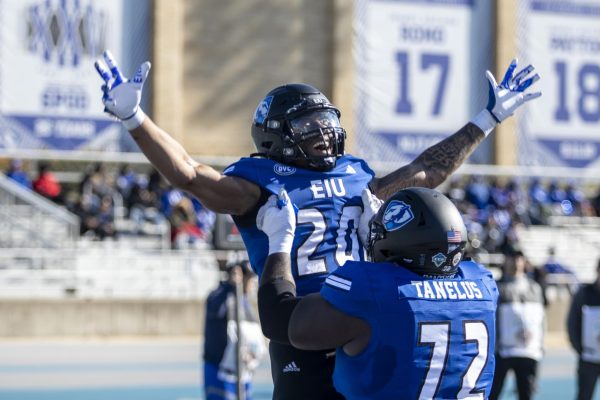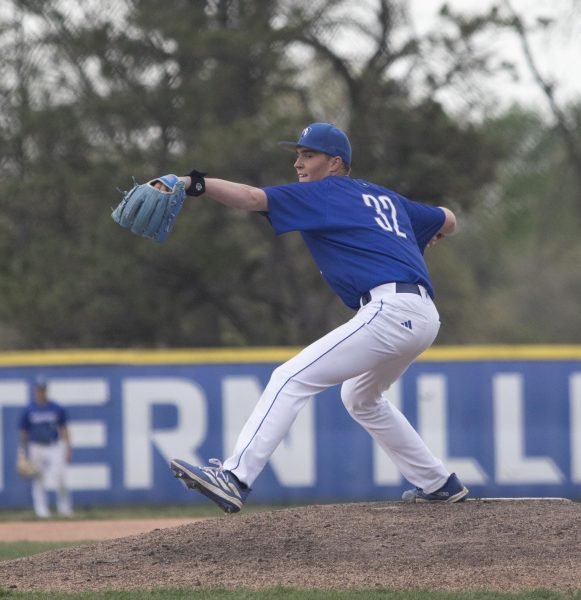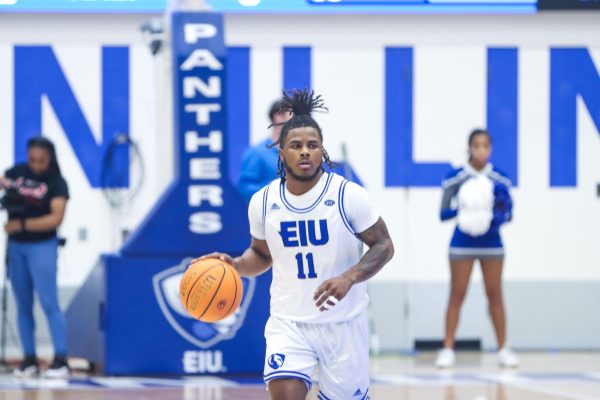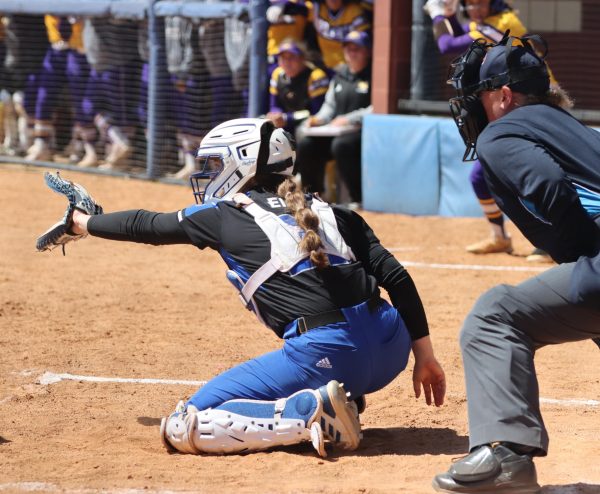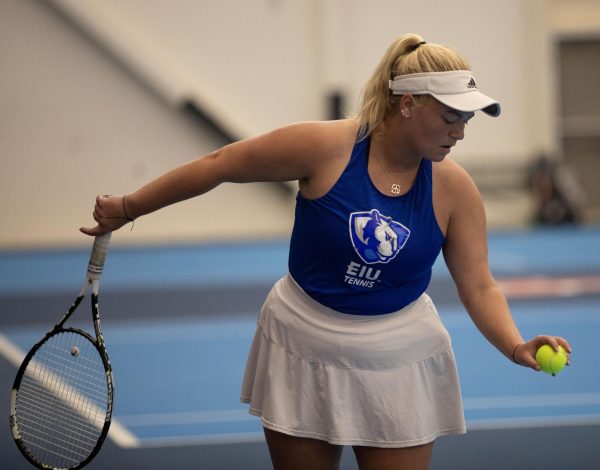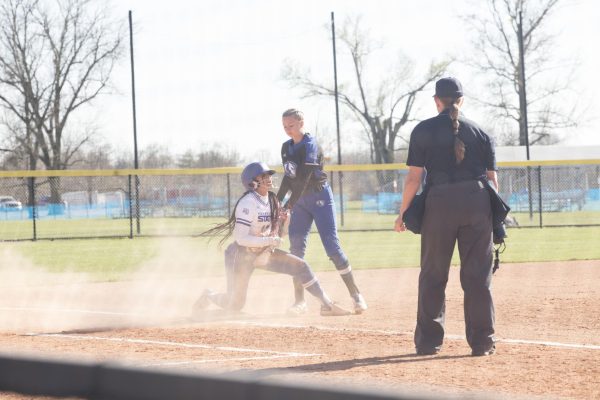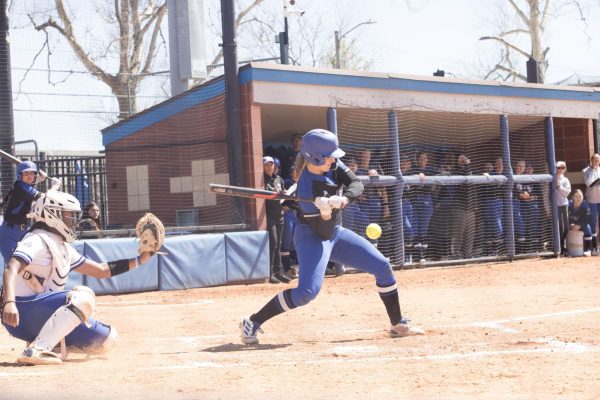A look at in-state graduation rates
The biggest challenge in college basketball might be finding a coach who agrees with the current NCAA graduation rate formula.
“A change has to happen because the current system we have for calculating it is far from accurate,” Eastern head men’s basketball coach Rick Samuels said.
So, confusion set in the moment NCAA president Myles Brand announced during the Final Four that he was looking into legislation to reward and punish schools for their graduation performances.
Brand is looking into awarding schools extra scholarships if they maintain high graduation rates and taking them away from certain schools that aren’t successful in the classroom. Brand also has hinted a possible ban from post-season play including the NCAA Tournament could be a penalty as well.
However, head coaches want a change in the system before they are penalized for it.
“The NCAA tends to make sudden decisions without considering how it may affect everyone and then they say, ‘whoops, we messed up’,” Southern Illinois men’s basketball head coach Bruce Weber said.
According to the 2002 NCAA Graduation Rate Report, 10 of this season’s Sweet 16 teams have failed to graduate even half of its players in recent years. In fact, the University of Oklahoma had a zero graduation rate, although the school challenges the criteria.
“Our graduation rate is 100 percent,” Oklahoma men’s basketball head coach Kelvin Sampson said in a press conference. “That freshman class was Bobby Joe Evans and Michael Cotton, and they both graduated – Bobby Joe from here and Michael from Boston College.”
The graduation rate formula is broken down into many parts. To begin, the NCAA allows athletes to graduate in a six-year period. Therefore, the 2002 graduation rate numbers are for the 1995-1996 freshman class. Therefore, Henry Domercant’s graduation won’t count for Eastern until 2006.
According to the report, Eastern graduated 58 percent of its basketball players and 69 percent of all athletes this season, which seems like a low figure but coaches will argue those statistics are highly deceiving for three big reasons.
First of all – the NCAA currently doesn’t allow junior college transfers to count toward the rating. Eastern currently had three junior college transfers on the 2002-2003 roster.
Therefore, Eastern had to automatically add those players as zeros toward the average rate.
Many major and mid-major programs rely on the impact of junior college transfers for instant success and later on attempt to build a pipeline for recruiting.
“I can tell you that (University of Cincinnati head men’s basketball coach) Bob Huggins always talks about his niche being able to land transfer athletes,” Weber said. “Then, at the end of the year he gets punished for it.”
However, recruiting could take a major setback as repeated poor numbers presented by the NCAA results in prospects looking elsewhere.
“All basketball coaches want their players to graduate,” Northern Illinois head men’s basketball coach Rob Judson said. “When we go to recruit these kids, the first thing the parent asks us is what our graduation rate is.”
The Huskies graduated 42 percent of its men’s basketball players and 62 percent of its athletes.
Secondly – The NCAA also doesn’t count college athletes who decide to turn professional even if they come back and get their degree in six years.
“I think that is what makes our figures look really bad but I can’t even tell them to stay,” Weber said. “That’s what makes college basketball so different. How many other sports exist where a kid can go professional worldwide?”
This part of the formula is what normally lowers the ranking for the major programs in the country. At the NCAA coaching meetings in Indianapolis, Ind., Michigan State men’s head coach Tom Izzo is a big advocate of removing that part of the policy.
“He is always getting up and saying that his graduation rate will always look bad because I’ve got kids who want to make money,” Weber said. “When I was a assistant at Purdue, Glenn Robinson counted against us but one would argue he’s making OK money.”
This is why Weber tracks each of his players and hands that to parents of a recruit he is pursuing.
“I had them on my list of my players and they can look and see that this person graduated but not with us,” Weber said.
Southern Illinois graduated 27 percent of its men’s basketball players and 54 percent of its athletes.
Lastly – As of next year, the NCAA is mandating a 25-40 rule which clearly states that a athlete must know have 25 percent (used to be 20) of his graduation requirement complete as a freshman. As a sophomore, he must complete 40 percent (used to be 25) of his requirement done. This rule limits the options a student-athlete has when they decide to change majors.
“Twenty-five to 40 is a big jump, which makes it harder for a recruit to transfer or change a major even once,” Judson said.
“An average kid in college changes majors three times but it hampers athletes’ options when they want to,” Weber said.
If that’s not enough, if a coach were to concentrate on following the graduation rate exactly, the possibility of not having a job increases.
“When I took over at Southern, I had seven players on the roster and I was forced to sign transfers,” Weber said. “At a mid-major, if a coach depends on freshman, his butt will get fired in three years.”
The conundrum facing college basketball coaches is a main reason why a negative rumor has developed about the sport in general.
“Every coach in the country wants a new system because as a group, basketball has received a black eye over the years considering academics,” Samuels said.
In the end, most coaches will argue that the situation doesn’t start at the collegiate level but finishes there.
“We have to make them students at the junior high and high school level,” Weber said. “Once they get to college, you can lead a horse to water but you can’t make them drink.”




































